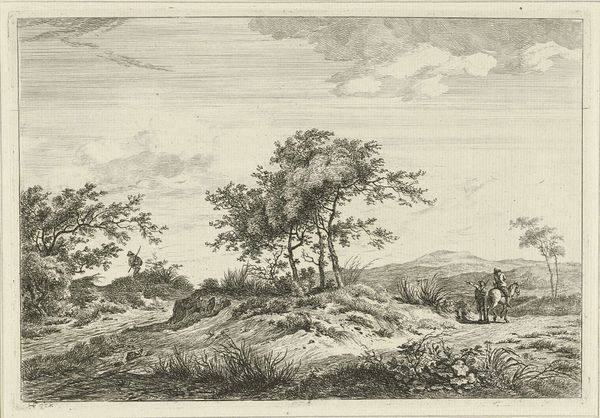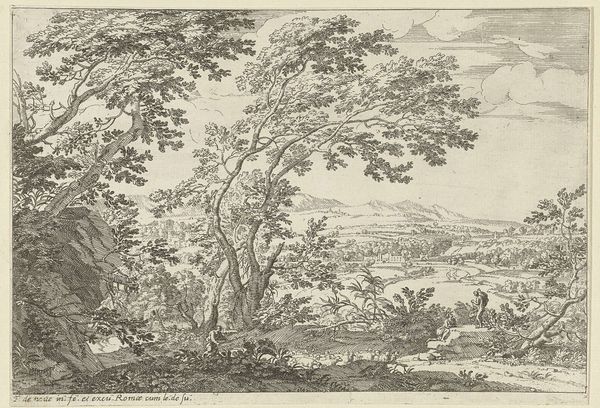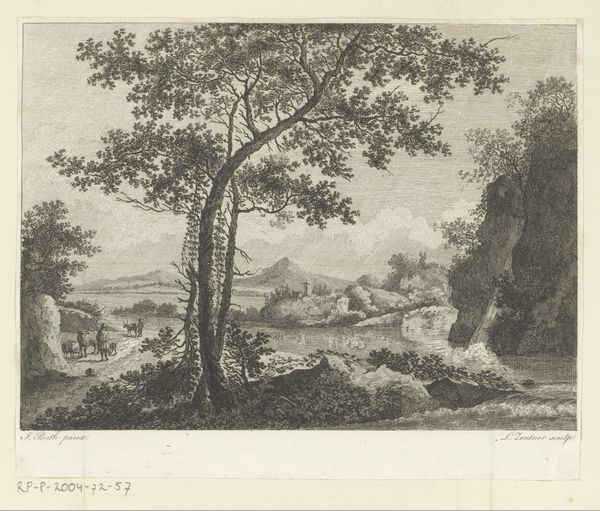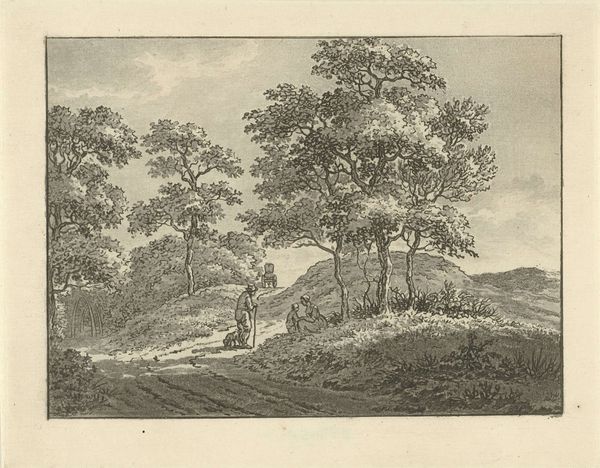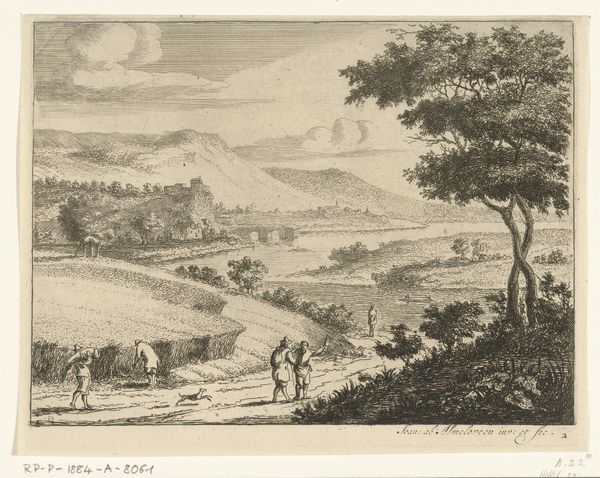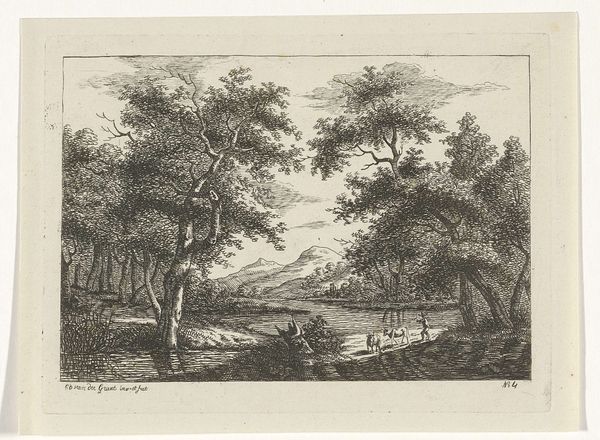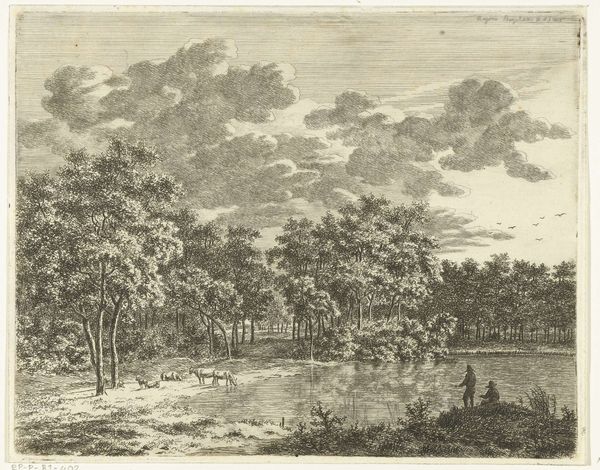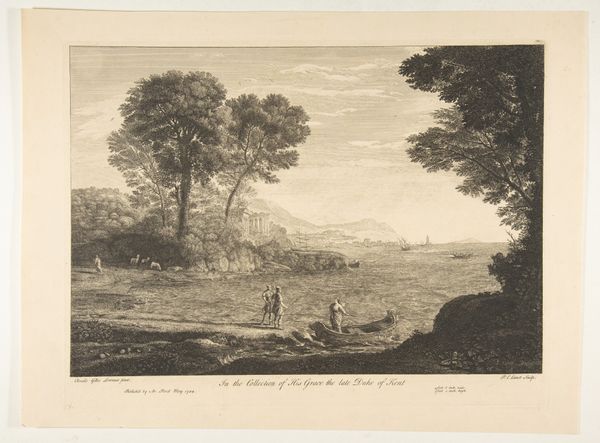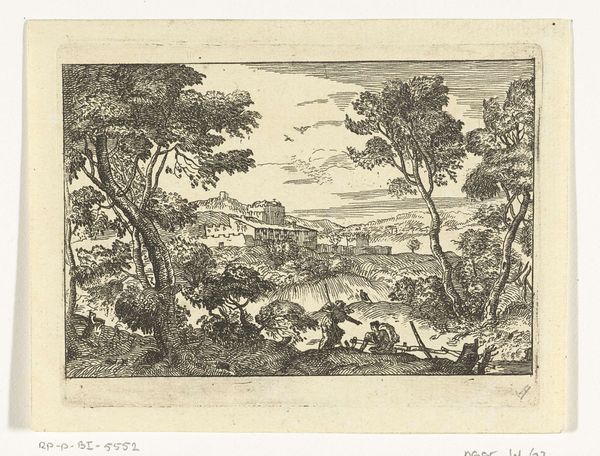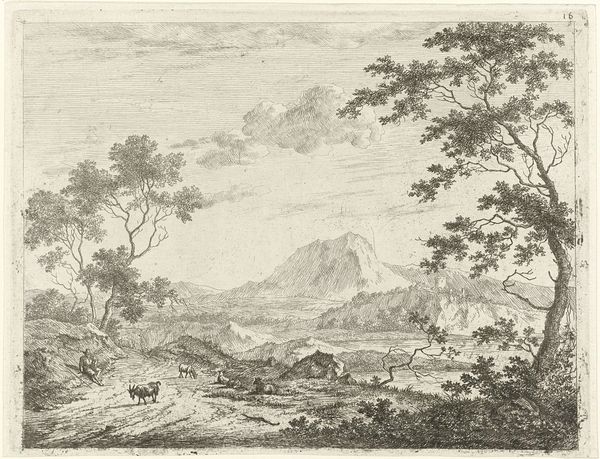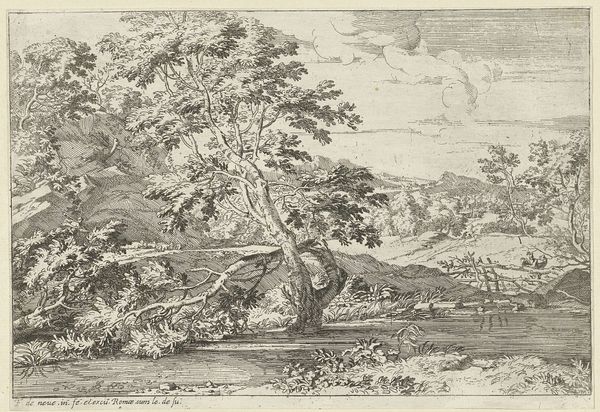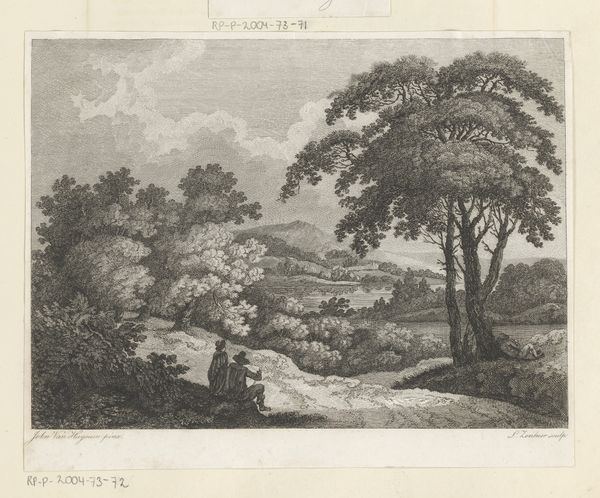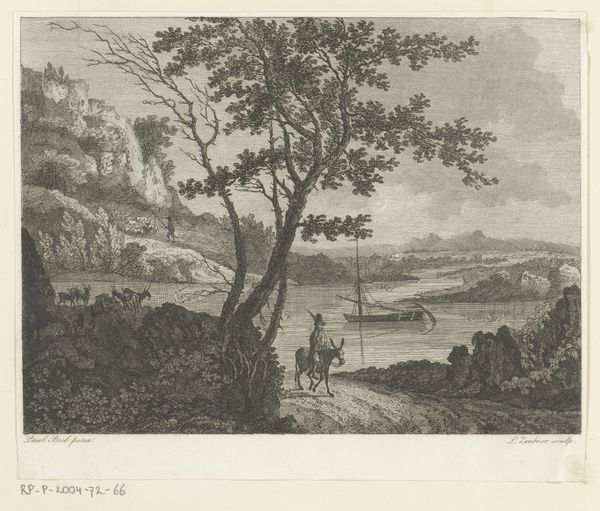
print, etching
#
baroque
#
dutch-golden-age
# print
#
etching
#
landscape
#
etching
#
figuration
Dimensions: height 150 mm, width 193 mm
Copyright: Rijks Museum: Open Domain
Jan van Almeloveen created this landscape with wanderers using etching, likely in the late 17th century. The process of etching involves covering a metal plate with a waxy ground, then scratching an image into that surface, exposing the metal beneath. The plate is then submerged in acid, which bites into the exposed lines, creating grooves. Ink is applied to the plate, filling these grooves, and the surface is wiped clean. Finally, the plate is pressed onto paper, transferring the inked image. The etched lines lend themselves to the detailed depiction of nature, from the leafy trees to the distant hills. The fine lines also allow for shading and depth. The printmaking process also allowed for the democratization of art, making images like this available to a broader audience. This was a time of increased urbanization and the rise of a merchant class, where art became a commodity, and prints like this one met the demands of a growing market.
Comments
No comments
Be the first to comment and join the conversation on the ultimate creative platform.
